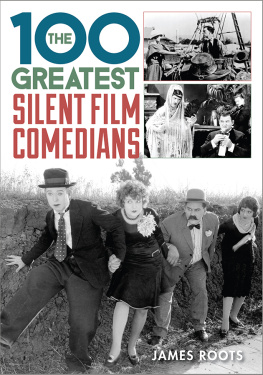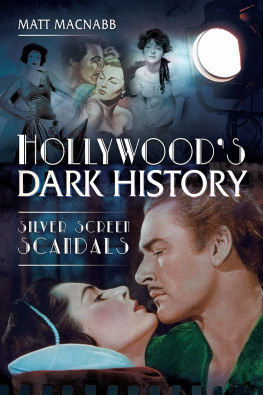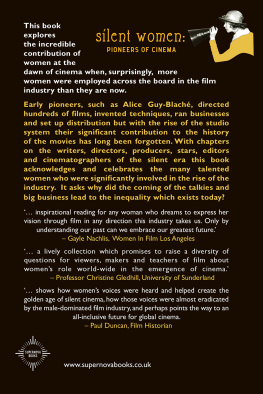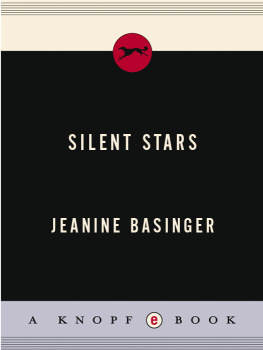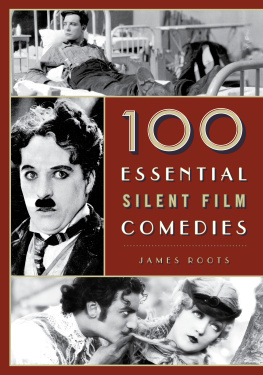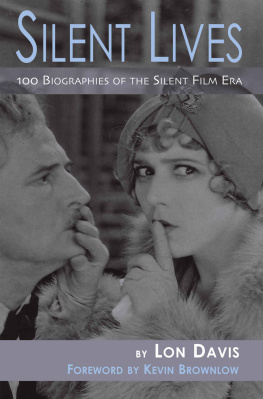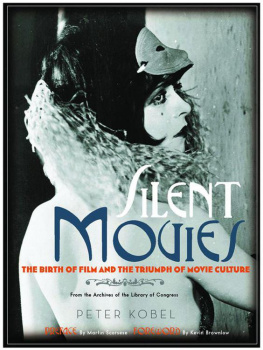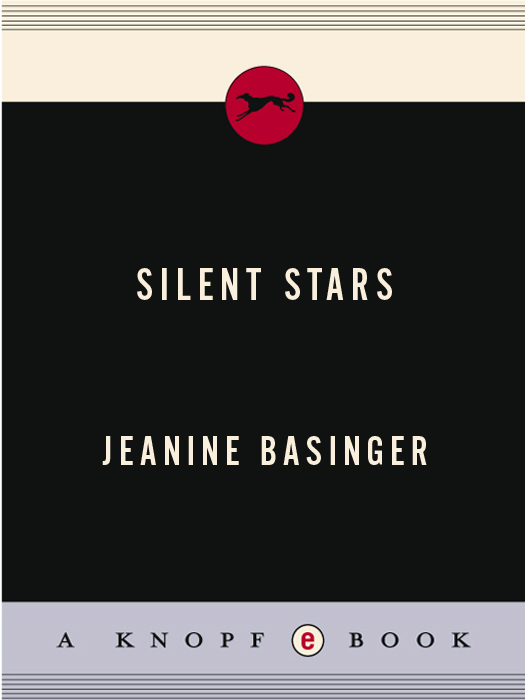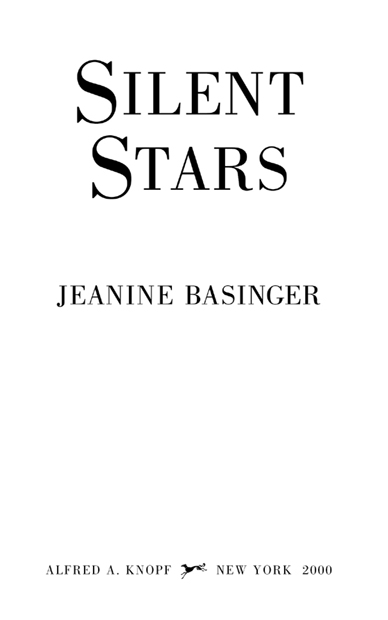ALSO BY JEANINE BASINGER
The Its a Wonderful Life Book
The World War II Combat Film: Anatomy of a Genre
Anthony Mann
A Womans View: How Hollywood Spoke to Women, 19301960
American Cinema: 100 Years of Filmmaking
This Is a Borzoi Book
Published by Alfred A. Knopf
Copyright 1999 by Jeanine Basinger
All rights reserved under International and Pan-American Copyright Conventions.
Published in the United States by Alfred A. Knopf, a division of Random House, Inc., New York, and simultaneously in Canada by Random House of Canada Limited, Toronto. Distributed by Random House, Inc., New York.
www.randomhouse.com
Knopf, Borzoi Books, and the colophon are registered trademarks of Random House, Inc.
Library of Congress Cataloging-in-Publication Data
Basinger, Jeanine.
Silent Stars / by Jeanine Basinger. 1st ed.
p. cm.
eISBN: 978-0-307-82918-4
1. Motion picture actors and actressesUnited StatesBiography.
2. Silent filmsUnited StatesHistory and criticism. I. Title.
PN1998.2.B373 1999
791.43028092273dc21
[B] 98-48060
Published November 4, 1999
Reprinted Once
FRONTISPIECE: The ultimate in silent star exoticaRudolph Valentino and Nita Naldi in Blood and Sand
v3.1
This book is lovingly and respectfully dedicated to all the stars of silent film that I have either written about only briefly or did not have room to mention: first and foremost Blanche Sweet, along with Wallace Reid, Raymond Griffith, Betty Bronson, Harry Carey, Eleanor Boardman, Charley Chase, Mary Miles Minter, Pearl White, Florence Vidor, Hoot Gibson, Thomas Meighan, Dolores Del Rio, Vilma Banky, Broncho Billy Anderson, Ben Turpin, Milton Sills, Laurel and Hardy, Jackie Coogan, Dorothy and Lillian Gish, William Haines, Mae Marsh, the comedy greats (Chaplin, Keaton, Lloyd, and Langdon), Esther Ralston, Richard Dix, Corrinne Grifith, Charles Ray, Sessue Hayakawa, Emil Jannings, and on and on
C ONTENTS
A CKNOWLEDGMENTS
I AM GRATEFUL to the many friends and colleagues who supported the research for this book, especially in helping me locate prints and videotapes of the movies. My particular thanks go to Elaina Archer of the Mary Pickford Foundation for her generosity, her enthusiasm, and her insight into both Mary Pickford and Clara Bow. I also want to thank Dennis Doros of Milestone Film and Video; Mary Lea Bandy, Steven Higgins, and Charles Silver of the Museum of Modern Art; Paolo Cherchi-Usai, Ed Stratmann, Caroline Yeager, and especially Carol Radovich and her bunch of volunteers, all of George Eastman House in Rochester, New York; David Francis and Madeline F. Matz of the Library of Congress; Maxine Fleckner Ducey of the Wisconsin Center for Film and Theatre Research; the Mandelbaums of Photofest; Linda Mehr of the Margaret Herrick Library at the Academy of Motion Picture Arts and Sciences; John Horn of the San Simeon District of Californias Department of Parks and Recreation; and Bruce Goldstein of the Film Forum. People who must be thanked for providing me with insights, research aid, copies of their own materials, and encouragement include Audrey Kupferberg and Rob Edelman, Bob Smith and Michael Geragetelis, Nancy Katz Colman, Jeffrey Lane, Jeremy Arnold, Liz Garcia, Bill Wolkoff, Morgan Fahey, Annette Tapert, Nancy Klawans Dunn, Frank Thompson, Brenda Keating, Jessica Rosner, Robbins Barstow, Cari Beauchamp, Lisa Dombrowski, Ken Wlaschin, and Rusty Casselton, who was particularly generous with his time in helping me with Colleen Moore. Leonard, Alice, and Jessie Maltin always deserve thanks on any movie project I undertake, as does the wonderful Co-curator of the Wesleyan Cinema Archives, Leith Johnson. I also want to pay tribute to the many silent film experts whose work I admire and whose insights I depended on: Kevin Brownlow, Richard Koszarski, Anthony Slide, David Shephard, and the late DeWitt Bodeen, who was so kind to me many years ago. They are to be thanked for the insights I received from them, but in no way blamed for any mistakes in judgment or lapses in taste.
No book I write could be done without the support of Wesleyan University and all my colleagues thereRichard Slotkin, Leo Lensing, Aks stor, Joe and Kit Reed, Bill Francisco, Jean Shaw, and Brenda Keatingor without Adele Wise, who transcribes my text onto the computer and who works long and difficult hours. As always, I must thank my husband, John, and our daughter, Savannah Jahrling, both of whom provided so much discussion and encouragement. Without John, this book would never have been finished, because he did so much to support it.
I must also thank the people at Knopf who worked so hard in behalf of Silent Stars: Ken Schneider, Karen Mugler, Iris Weinstein, Tracy Cabanis, Andy Hughes, Carol Carson, and Susan Innes.
My final thanks are reserved for my editor, Bob Gottlieb, who has helped me so much with all the projects we have undertaken together, but who this time around did more than anyone could reasonably expect. For his insight and patienceand for accompanying me on journeys to screen movies in faraway placeshe can never be thanked enough. It is a true friend wholl share the burden of rapidly translating silent film titles that are half in French and half in Spanish as they swiftly roll by. (Between us we could just about cover them.)
I NTRODUCTION
T HE PURPOSE OF THIS BOOK is to celebrate a group of silent film stars who are somehow forgotten, misunderstood, or underappreciated. They are all important stars, not minor figuresactors and actresses who made a major impact in their own time. I wanted to watch their movies and consider what was significant about them then and what they seem like now. My primary interest lay in sharing the experience of viewing their work, since their movies are mostly not readily available to audiences today. Although I wanted to present an overview of each stars life and career, I didnt plan to write detailed biographies. And in no way would I be writing a history of silent cinema.
The stars I selected are not a representative group, and someone else might have made a somewhat different list. (When I told a friend I was embarking on this book, he immediately said, You absolutely have to do Harry Carey. Well, I didnt do Harry Carey, even though I think hes first-rate. No doubt my friend will be disappointed.) My choices were not whimsical, but they were personal. I began by considering everyone, including names I had barely heard of, and names I knew, but had limited experience with. For instance, anyone with a nodding acquaintance of silent film has seen Constance Talmadge as the Mountain Girl in D. W. Griffiths Intolerance, but who knows her as the title character in The Duchess of Buffalo or Venus of Venice? And there were so many stars then! Soon I had lists of the well-known, the lesser-known, the unknown, and the known-then-but-not-nowmany names, many faces. As it turned out, the greatest stars were by far the most interesting, and many of them were very different from what I had expected. I had assumed that the really big names would not fit into the categories of forgotten, misunderstood, or underappreciated, but to my surprise, many of them


